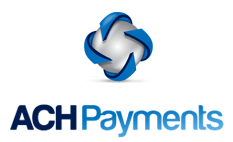ACH payments and disbursements aren’t new. ACH payments have been around since 1974, and by the end of 2016, the total volume of ACH processing exceeded $40 trillion. If you have made monthly AutoPay payments for your mortgage, paid a credit card bill or received salary as direct deposit, those transactions were via ACH.Any SaaS application that has a user base with recurring or subscription payments needs must include ACH payments as a payment rail option. In many cases ACH should be the defacto payment method for anything recurring. The simple fact is that ACH transactions have much lower processing costs than do credit card transactions. Further, credit card decline rates can cause havoc with recurring payments because of much higher decline rates. How the SaaS development team decides to manage recurring payments should be their choice. They may opt to utilize the ACH API’s recurring scheduling system or, manage the recurring schedule within their application.
While there are pre-built tools like web portals available from banks and Third Party ACH Processors, as well as sFTP batch file processing for ACH, many organizations require integration to a software platform in order for their SaaS to manage the transactions.
Further, ACH API integration allows an organization to better control the user experience. Raw reporting data can be called from the processor and visually presented to the SaaS adopters in a meaningful fashion. Organizations that have a recurring payments need or component can be presented information about retention, which is critical to their overall health.Many processor ACH API’s are integrated with ancillary services that can benefit their user base. For example, customer data like Name, Address, Business Name, SSN, DOB and driver’s license can be used to verify that a bank account is owned by that person, and that the person is who they say they are; an important factor in KYC (Know Your Customer) and risk mitigation. In many cases, funds availability can be called to ascertain whether an account has funds available and is open or closed.
processor and visually presented to the SaaS adopters in a meaningful fashion. Organizations that have a recurring payments need or component can be presented information about retention, which is critical to their overall health.Many processor ACH API’s are integrated with ancillary services that can benefit their user base. For example, customer data like Name, Address, Business Name, SSN, DOB and driver’s license can be used to verify that a bank account is owned by that person, and that the person is who they say they are; an important factor in KYC (Know Your Customer) and risk mitigation. In many cases, funds availability can be called to ascertain whether an account has funds available and is open or closed.
An ACH API can also be capable of assisting in the onboarding of the SaaS users. Using the API, SaaS organizations can capture new user underwriting data, displaying an application and agreement on the SaaS organization’s website, eliminating the need to leave the SaaS user experience by what would have been a redirection to the actual ACH processor for an underwriting application.
Near realtime notification data should be part of a good ACH API integration. Postbacks or webhooks should be available to devise and present notification data for the ACH transactions.
Many SaaS organizations seek a payments partnership for their ACH processing needs. Significant revenues can be added to an organization’s bottom line by marking up an ACH buy rate, yet still providing a market price to their user base. Seek flat buy rates that allow you to sell in the 30 cent range. A percentage (discount fee) should not be part of the equation.





